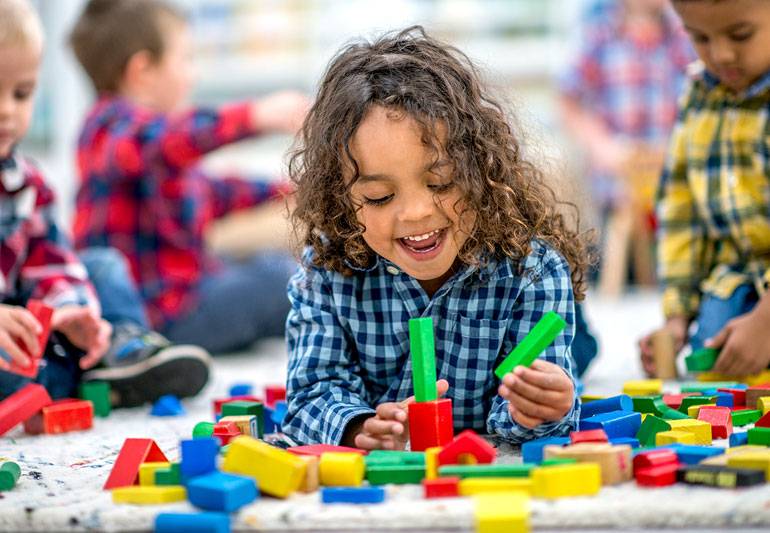Table of Contents
Introducing your child to the world of public speaking through Show and Tell presentations can have a profound impact on their confidence and overall personal growth.
Public speaking is a skill that equips children with essential tools for success, helping them overcome fears, enhance communication abilities, and foster self-expression.
In this article, we at Omega Pediatrics will explore 12 captivating Show and Tell ideas that will ignite your child’s imagination and allow them to shine in front of their classmates.

1. Favorite Toy
Let your child bring his favorite toy and explain why it holds a special place in his heart. Tell him to describe how it brings him joy, share any memorable experiences while playing with it, and how it sparks his imagination and creativity.
Let him talk about the adventures he had embarked on with his toy, the characters he had created, and the stories he had imagined. Tell him to express how his toy has been a faithful companion, providing comfort during difficult times and inspiring endless hours of fun.
For your child’s concluding statement, let him highlight how the toy has become more than just an object—it has become a cherished friend and a source of endless imagination and creativity.
2. Pet or Stuffed Animal
Have your child introduce his pet or a cherished stuffed animal. Let him talk about the pet’s name and breed, and explain how it becomes his best friend. He will describe their unique qualities, such as their loyalty or comforting presence.
Your child may also share heartwarming anecdotes about his or her moments with the pet or stuffed animal, emphasizing the bond and trust that developed. Let your child discuss how the pet provides unconditional love, lends a listening ear, and offers comfort.
Tell your child to end the presentation by highlighting the lessons they teach about responsibility, empathy, and the joy of nurturing and caring for others.
3. Family Photo
You can let your child share a treasured family photo. Let him describe the memories associated with the photo, such as a fun family outing or a special celebration. Explain why those moments are significant and how they have shaped your family’s bonds and values.
Your child may also discuss the emotions captured in the photo and the love and support your family provides. Let him share stories about the traditions you uphold, the laughter you enjoy, and the milestones you’ve celebrated together.
Highlight how the photo represents the essence of your family and reminds him of the love and togetherness that surround you every day.
4. Treasures from Nature
Let your child bring rocks, seashells, or leaves that you’ve collected during your outdoor trips. Your child will explain where he found them, their unique features, and why they’re fascinating. Discuss how these treasures connect your child to the beauty and wonders of nature.
Let him share stories about the moments when you stumbled upon these treasures—a shimmering rock by a river, a delicate seashell on a sandy beach, or a vibrant leaf in a forest.
You can discuss how these objects serve as reminders of the diverse and intricate ecosystems around him, igniting your passion for conservation and encouraging him to explore and protect the natural world.

5. Favorite Book
Tell your child to present his favorite storybook and describe the plot, characters, and why it captivates his imagination. Tell him to share his favorite part or a lesson learned.
Let your child talk about the moments when he felt connected to the characters and their journeys. Explain how the book has opened his mind to new perspectives, taught him important life lessons, and encouraged his storytelling abilities.
Your child may conclude the presentation by expressing his gratitude for the power of literature to inspire, educate, and entertain.
6. Hobby or Sport-Related Item
Let your child bring display items related to a hobby or sport he enjoys. Explain the skills involved and why he is passionate about them. He can demonstrate a simple technique or share a memorable achievement related to his hobby or sport.
Also, let him describe the moments when he discovered his passion for this hobby or sport, the challenges he had to overcome, and the progress he has made.
Your child can finalize by explaining how the activity has become an outlet for his creativity, a way to relieve stress, and an avenue for personal growth. Let him highlight the valuable life skills and friendships he has developed through your involvement in this activity.
7. Your Child’s Artwork
Your child can show and explain a drawing, painting, or craft project. He can describe the inspiration behind it, the materials used, and any special techniques or challenges encountered while making it.
Let him discuss how art expresses emotions, channels creativity, and communicates ideas visually. Let him share the story behind his artwork—the feelings or experiences that motivated him to create it, the meaning it holds, or the message he wants to convey.
Your child can also explain how art has become a form of self-expression, a way to explore different mediums and styles, and a means to communicate with others uniquely and powerfully.
8. Musical Instruments
Your child can showcase a musical instrument he plays or is learning. He can explain how it works, demonstrate a simple melody, and share why he enjoys playing it. Tell him to discuss how music touches his soul, allows him to express himself, and brings him joy.
Let your child talk about the journey of learning to play his instrument—the hours of practice, the sense of achievement when mastering a new technique, and the joy of creating beautiful melodies.
He can also describe the emotions that music evokes, the sense of connection it provides, and the way it has enriched his life. He can conclude by sharing stories of performances that let him share his musical talent with others.
9. A Special Collection
Your child can bring a collection of items such as stamps, coins, or trading cards. He can talk about how he started the collection, his favorite piece, and any interesting facts about the items. He will also share how collecting has taught him about different cultures.
Let him discuss the joy of discovering new additions to his collection, the thrill of finding rare items, and the satisfaction of organizing and displaying them. He can explain how his collection has provided a sense of focus, curiosity, and appreciation for the beauty of the objects.
This can be concluded by highlighting the lessons he has learned about research, organization, and the value of preserving history and culture.
10. Travel Souvenirs
Let your child share a souvenir from a memorable trip. He can describe the destination, the travel experience, and why this souvenir reminds him of those special moments. He can discuss how traveling exposes him to new cultures, broadens his perspective, and creates lasting memories.
Let him explain how this souvenir represents the spirit of his journey, the connections he made, or the transformative experiences he had. Highlight how travel has expanded his horizons, encouraged a sense of adventure, and fostered curiosity about different places and people.
11. Science Experiment
If your child is a science geek, he can perform a simple science experiment and explain the scientific concepts behind it. He can describe the materials used, the procedure, the results, and the lessons he learned.
Let him discuss how science allows him to explore the mysteries of the world and develop critical thinking skills. And conclude it by highlighting the importance of experimentation, curiosity, and the scientific method in unraveling the mysteries of the world.
12. Your Child’s Favorite Food
Your child may bring in a sample of his favorite food and explain why he enjoys it. Tell him to describe the ingredients, the flavors, and any special memories or occasions associated with the dish.
He can also discuss how food connects people, cultures, and traditions and how it satisfies not only his taste buds but also his sense of comfort. He can also describe the preparation as if he cooked it himself or enjoyed the dish—the aromas that fill the kitchen.
He can end his presentation by discussing how food reflects his cultural heritage, the importance of sharing meals with loved ones, and the pleasure of exploring different cuisines and flavors.
Boost Your Child’s Confidence with Show and Tell Presentation
Show-and-tell is not just a classroom activity. It’s a stepping stone towards greater self-assurance, effective communication, and a lifelong love for learning and self-expression.
By engaging in show-and-tell presentations, your children can develop their speaking skills while showcasing their unique interests, passions, and experiences.
Your child might be scared for his first presentation. We at Omega Pediatrics are here to help you and your child. We have articles and resources that can shed useful insights to guide your child as he journeys through his academic life as well as his health.
Your provider at Omega Pediatrics is your perfect ally as we nurture our children’s skills so they grow smart and shine in their academic lives. Let’s work together!
What is Show and Tell, and why is it important for children?
Show and Tell is a presentation activity where children share items or experiences with their classmates, boosting their confidence and communication skills.
What are some captivating Show and Tell ideas for children?
Ideas include sharing a favorite toy, pet, family photo, treasures from nature, favorite book, or hobby-related item.
How can parents help prepare their child for a Show and Tell presentation?
Parents can encourage their child to talk about why the item is special to them, share stories or memories associated with it, and practice speaking clearly and confidently.
What are the benefits of participating in Show and Tell presentations?
Show and Tell helps children develop public speaking skills, express themselves creatively, and build connections with their peers through sharing personal experiences.
Where can parents find resources to support their child’s Show and Tell experience?
Omega Pediatrics provides articles and resources to guide parents in helping their child navigate through their academic and personal growth, including preparing for Show and Tell presentations.



